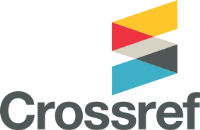Comparison of the physical therapy program for acute disorders of cerebral circulation
DOI:
https://doi.org/10.32782/2077-6594/2025.1/12Keywords:
stroke, rehabilitation, treadmill, walkingAbstract
Purpose: to compare the effect of gait training on a treadmill with body weight maintenance in a Guldmann device with gait therapy on a conventional surface in patients in the early phase of stroke. Materials and methods: 42 patients at an early stage of stroke (two to six weeks after stroke onset) were randomized into two therapeutic groups. The first to be given treadmill gait therapy in the Guldmann Weight Loss Device (BWSTT) and the comparative group to be given walking on a natural surface. Results: The Berg Equilibrium Scale, the difference between the score at the first examination (before therapy) and the score obtained after the end of therapy, averaged 8 points in both groups. The average time improvement obtained in the BWSTT group was 4.0 ± 3.30 seconds, and in the comparison group – 2.2 ± 1.90 seconds. Estimation of gait speed. The difference in gait speed between the baseline value and the value obtained after therapy in the BWSTT group was 0.38 ± 0.20 m/s, while in the comparison group it was 0.2 ± 0.10 m/s. Evaluation of the gait function. After the therapy, the average value of this indicator in the BWSTT group increased to 338.90 ± 107.70 meters, and in the comparison group – to 253.80 ± 125.50 meters. Conclusions: Walking training on a treadmill with body weight maintenance has a more beneficial effect on functional improvement (balance, speed and gait distance) in patients in the early phase of stroke, compared to gait therapy on a normal surface.
References
Katan M, Luft A. Global burden of stroke. Semin Neurol. 2018;38(2):208-211.
Mahler M, Züger K, Kaspar K, Haefeli A, Jenni W, Leniger T, et al. A cost analysis of the first year after stroke–early triage and inpatient rehabilitation may reduce long-term costs. Swiss Med Wkly. 2008;138(31-32):459-465.
Mehrholz J, Thomas S, Elsner B. Treadmill training and body weight support for walking after stroke: a review. Cochrane Database Syst Rev. 2017;8(8):CD002840.
Billinger A, Arena R, Bernhardt J, Eng JJ, Franklin BA, Johnson CM, et al. Physical activity and exercise recommendations for stroke survivors: a statement for healthcare professionals from the American Heart Association/American Stroke Association. Stroke. 2014;45(8):2532-2553.
Mierlo ML, Schröder C, Heugten CM, Post MW, Kort PL, Visser-Meily J. The influence of psychological factors on health and related quality of life after stroke: a systematic review. Int J Stroke. 2014;9(3):341-348.
Saunders DH, Sauderson M, Hayes S, Kilrane M, Greig CA, Brazzeli M, et al. Physical fitness training for stroke patients. Cochrane Database Syst Rev. 2016;3(3):CD003316.
Blum L, Korner-Bitensky N. Usefulness of the Berg Balance Scale in stroke rehabilitation: a systematic review. Phys Ther. 2008;88(5):559-566.
Stevenson TJ. Detecting change in patients with stroke using the Berg Balance Scale. Aust J Physiother. 2001;47(1):29-38.
Persson CU, Hansson PO, Sunnerhagen KS. Clinical tests performed in acute stroke identify the risk of falling during the first year: postural stroke study in Gothenburg (POSTGOT). J Rehabil Med. 2011;43(4):348-353.
Andersson AG, Kamwendo K, Seiger A, Appelros P. How to identify potential fallers in a stroke unit: validity indexes of 4 test methods. J Rehabil Med. 2006;38:186–191.
Flansbjer UB, Holmbäck AM, Downham D, Patten C, Lexell J. Reliability of gait performance tests in men and women with hemiparesis after stroke. J Rehabil Med. 2005;37(2):75-82.
Perera S, Mody SH, Woodman RC, Studenski SA. Meaningful change and responsiveness in common physical performance measures in older adults. J Am Geriatr Soc. 2006;54(5):743-749.
Lusardi M, Pellecchia GL, Schulman M. Functional performance in community-living older adults. J Geriatr Phys Ther. 2008;26:14-22.
Steffen TM, Hacker TA, Mollinger L. Age-and gender-related test performance in community-dwelling elderly people: Six-Minute Walk Test, Berg Balance Scale, Timed Up & Go Test and gait speeds. Phys Ther. 2002;82(2):128-137.








